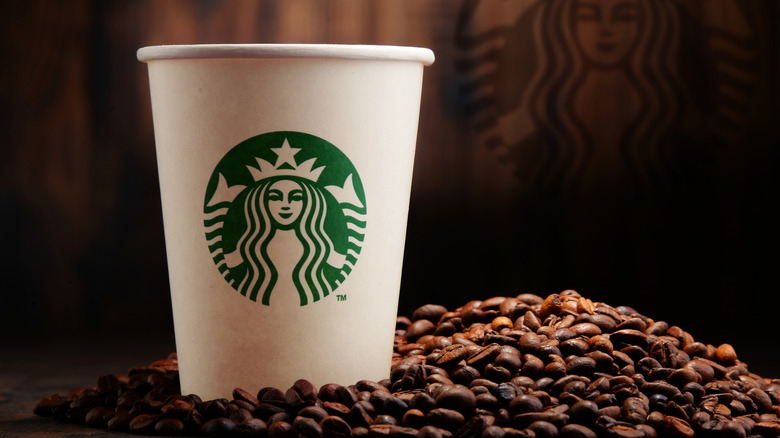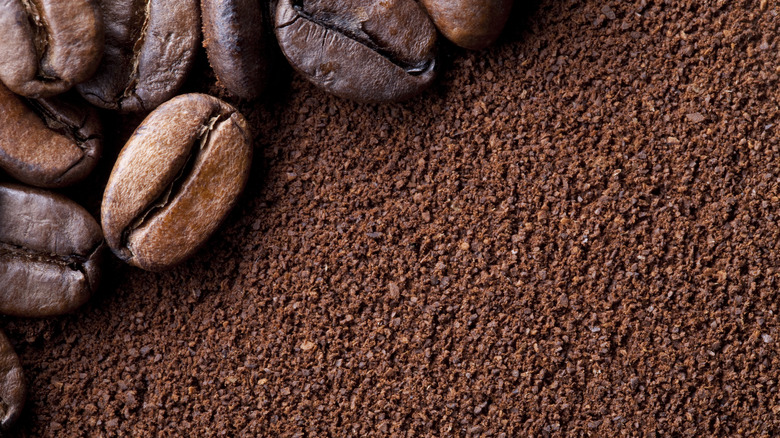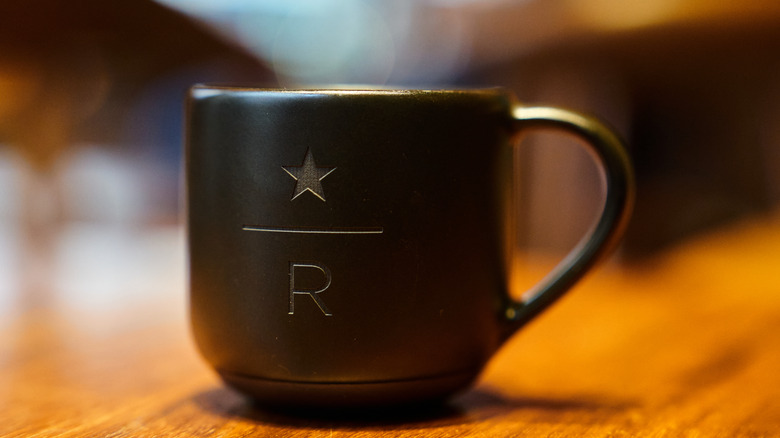The Rare Starbucks Reserve Coffee Customers Are Desperate To Taste
Although you can buy Starbucks' popular line of ground and whole-bean coffee at any grocery store, some of their coffees — particularly those sold at the bougie Starbucks Reserve locations — are all but impossible to find anywhere else. One such coffee is Microblend No. 11, which was first made available in 2013.
The term "microblend" denotes premium quality, small-lot coffees that are exclusive to Starbucks Reserve Roasteries. A combination of enticing flavor, scarce supplies, and endorsement from Starbucks' CEO made Microblend No. 11 highly sought-after, like the white whale of Starbucks coffees. The company's former CEO, Howard Schultz, described the blend as "fantastic" and "extraordinary," which fueled fans' curiosities and desires. Created by coffee specialist Leslie Wolford, Microblend No. 11 uses 70% Guatemala Antigua and 30% sun-dried Ethiopia beans. This creates a rich, port-like coffee with notes of citrus, jammy berries, and chocolate.
Getting your hands on this blend isn't as simple as walking into a Starbucks Reserve location, if you're lucky to live near one. Microblend No. 11's extreme rarity has made it a legend. Starbucks Reserve stores strictly sell single-origin, non-blended coffees, so the company was reluctant to make Microblend No. 11 consistently available at these locations. The blend's production was largely devoted to fulfilling orders by restaurants, with any excess beans going to the scoop bar at Starbucks Reserve Roasteries. Unfortunately for coffee fans in 2024, finding the blend to taste for yourself would be a miraculous occurrence.
Can you still buy Starbucks' Microblend No. 11?
More than 10 years have passed since Starbucks first released Microblend No. 11, so it should come as little surprise that this blend has mostly faded out of existence. Indeed, the most recent batch was reportedly produced in early 2019, with third-party sellers asking as much as $75 for a five-pound bag of the stuff. Listings for the blend on Amazon have been labeled as unavailable and out-of-stock, much to shoppers' displeasure.
This isn't to say that Starbucks was hasty to do away with Microblend No. 11. The company has not been ignorant about the blend's popularity. In 2017, Starbucks Reserve locations took a moment to highlight Microblend No. 11 in three cold-pressed drinks. The Sparkling Americano, Americano Exploration Flight, and Ginger Fizz all featured Microblend No. 11 beans, along with cold-pressed espresso and ingredients like barrel-aged vanilla syrup. Sadly, these drinks were also only a temporary offering. Go to your local store today and ask your Starbucks barista when Microblend No. 11 will return, and it's likely that you'll get confused questions about what you mean.
Although drinks made with this special coffee have joined Starbucks' luxury drinking chocolate and Unicorn Frappuccino in the land of discontinued beverages, Starbucks continues to release new microblends every so often. No. 11's memory lives on in blends that follow in its footsteps — particularly Microblend No. 21.
What's the scoop on Starbucks' Microblend No. 21?
Starbucks Reserve microblends have gone through a number of different iterations over the years, with only a few making it to commercial production. Microblend No. 21 is the currently available blend that most resembles No. 11, and there's no denying it makes a decent stand-in. Like No. 11, No. 21 uses Guatemalan beans, but blended with those from Kenya instead of Ethiopia. The resulting drink is chocolatey, with notes of candied citrus, almost like caramelized lemons or oranges. That description likely has fans of unique coffee going "yes, please."
Like its sister blends, Microblend No. 21 is still produced in small lots, and can only be found at certain Starbucks Reserve locations, most notably in Prague, Tagaytay, and Hong Kong. As of 2022, No. 21 was made available at Starbucks' Seattle headquarters. Starbucks can't call a coffee "exclusive" if it's available everywhere, so curious java lovers might have to book a flight if they want to sample No. 21, and other unique specialties that can only be found at Reserves.
If Microblend No. 21 is just too far away for you to bother, you can find other unique, single-source coffees at Starbucks Reserve Roasteries in Chicago, Milan, New York City, Shanghai, and Tokyo. Whichever location or coffee you choose to seek out, happy sipping, and remember to savor your microblend — you never know when it's going to vanish.



